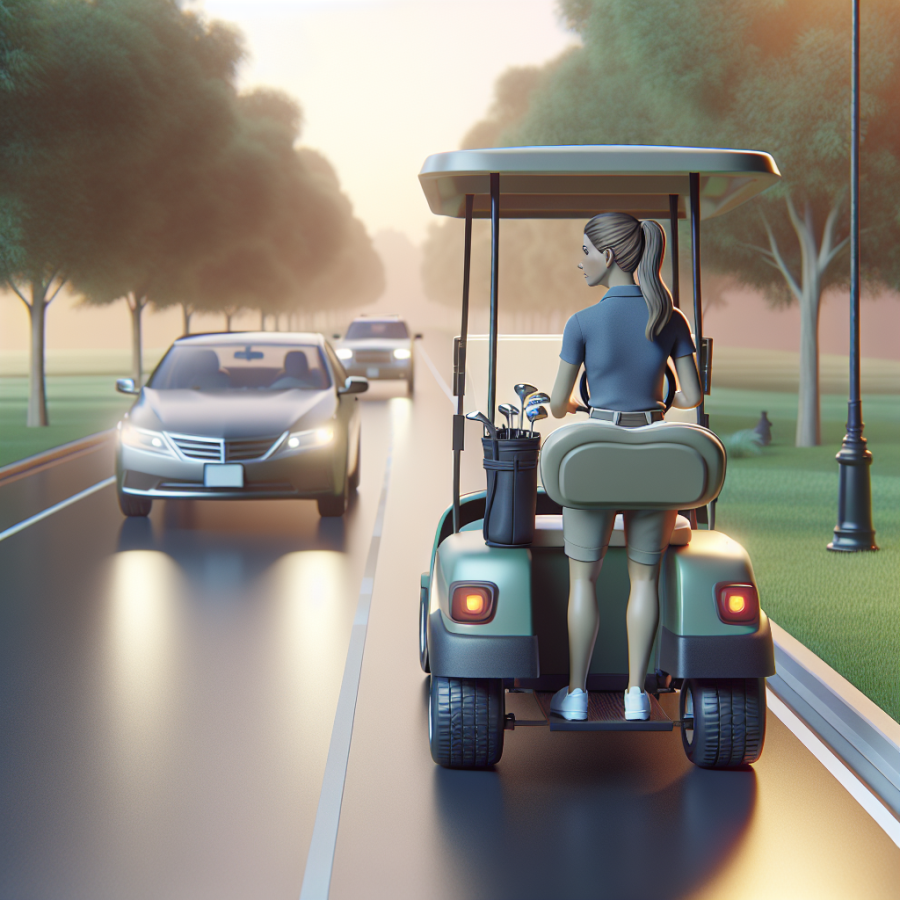Guidelines for Golf Cart Use and the Transportation Laws That Apply
Golf carts, while initially designed for mobility on golf courses, have gained widespread usage beyond this scope. They are now used in numerous settings such as private communities, large estates, campuses and even public roads. However, their use, particularly on public roads, is subject to certain rules and regulations. It is crucial for all golf cart owners and operators to properly understand these requirements to ensure they use their golf carts legally and safely.
When it comes to golf cart usage, different states have different laws. Some states allow golf carts on public roads, while others do not. The basic rule, however, does not allow golf carts on roads with speed limits above 25 to 35 mph. This is primarily for safety reasons, as golf carts cannot match the speed of other vehicles.
Additionally, golf carts permitted on public roads are usually required to be equipped with specific safety features. These can include seat belts, headlights, brake lights, turn signals, and a horn. In many areas, drivers are also required to have a valid driver's license and insurance coverage in place.
Operation of golf carts under the influence of alcohol or drugs is also prohibited, much like other vehicles. Some places require golf carts to be registered and to have a visible license plate. It's crucial to check local laws governing golf cart usage on public roads, as non-compliance can lead to fines, penalties, or even confiscation of the golf cart.
Guidelines for the safe operation of golf carts must also be adhered to. These may include rules on riding capacity (no overloading), speed limits, and ensuring cart paths or lanes are used where provided. Importantly, drivers should avoid distracting activities while driving a golf cart, like using a cell phone, eating, or anything that takes attention away from the road.
The younger population, particularly children, should not operate golf carts unless they are of a legal age and have a valid driver's license. In many jurisdictions, the minimum age to operate a golf cart is usually the same as the age required to drive a car.
In terms of liability, golf carts are typically covered under homeowners' insurance policies. However, when they are used on public roads, a separate, more specific golf cart insurance policy may be required. It's essential to confirm this with your insurance provider to ensure you have sufficient coverage.
Golf carts offer convenient transportation in many settings. However, every owner or driver must make safety and legality top priorities.
Read also:
Unleashing Your Maximum Velocity: Secrets to a Faster Pitch
Understanding Traffic Laws: The Legality of Golf Carts on Public Roads
Public roads are often inundated with vehicles of various types– from the heavy-duty trucks to the two-wheelers. One of the less conventional vehicles to traverse the roads is the golf cart. Although often associated exclusively with golf courses, these compact vehicles have found a niche in suburbs, gated communities, and even city streets as a viable means of transportation. But can they legally be driven on public roads? If so, under what circumstances?
Under U.S. Federal law, the legality of golf carts on public roads varies based on state, county, and local laws. Some places allow golf carts to be driven on public roads, while others do not. It's crucial for golf cart owners to understand these regulations to avoid inadvertent violations.
In states like Florida, where golf carts are incredibly popular, there's a specific set of laws outlining where and when these vehicles can be used. For instance, Florida law allows golf carts on certain public roads as long as the speed limit is no greater than 35 miles per hour. Even then, they have specific times at which they can use the roads and are required to be equipped with specific safety equipment like efficient brakes, reliable steering, safe tires, a rearview mirror, and red reflectorized warning devices both front and rear.
Conversely, in states like Oregon, the regulations are much tighter. Golf carts are not allowed on public roads except to cross them. A golf cart can only cross a public road that has a speed limit of 35 miles per hour or less, and such crossing must be at an approved crossing area and during daylight hours.
Even when allowed, regulations can require golf cart drivers to hold a valid driver’s license or permit. This requirement aims to ensure that the driver has a basic understanding of the traffic rules and can operate the vehicle safely. Therefore, underage or unlicensed individuals are often prohibited from driving golf carts on public roads.
Insurance requirements are another integral part of the legislation around golf carts. In most states that allow these vehicles on public roads, having valid insurance coverage is a prerequisite. The insurance serves to protect the driver, passengers, and any potential victims of accidents involving golf carts.
It is also essential to note that even where golf carts are allowed to be driven on public roads, local municipalities can still impose additional limitations. For example, specific city councils may restrict golf carts from busy streets or limit their use to certain hours of the day.




